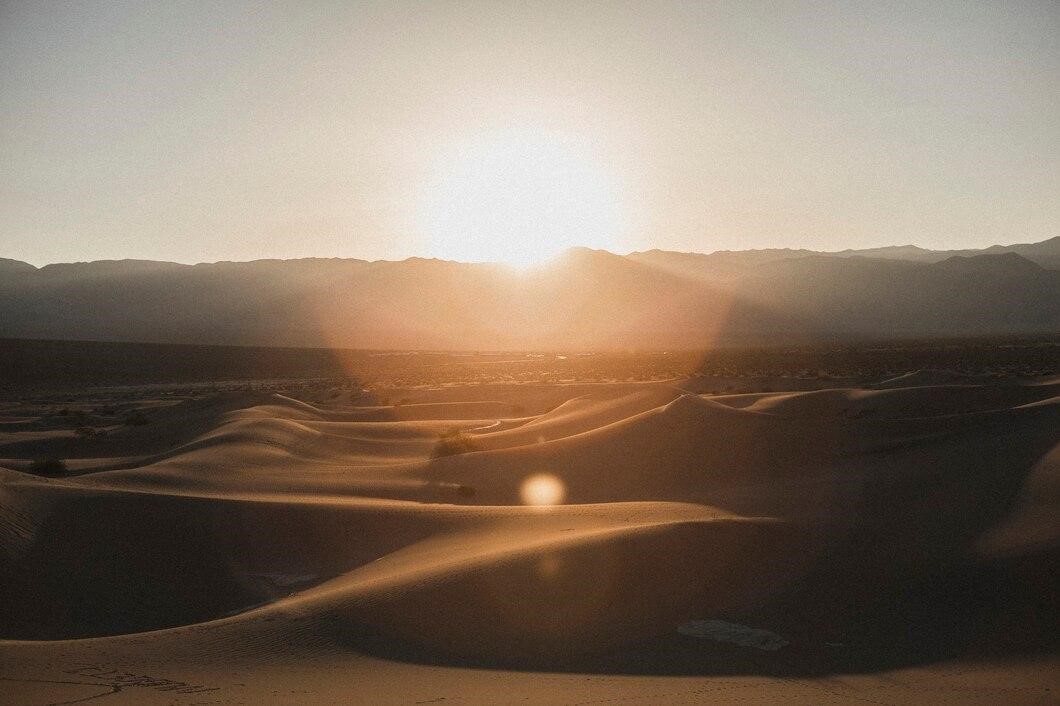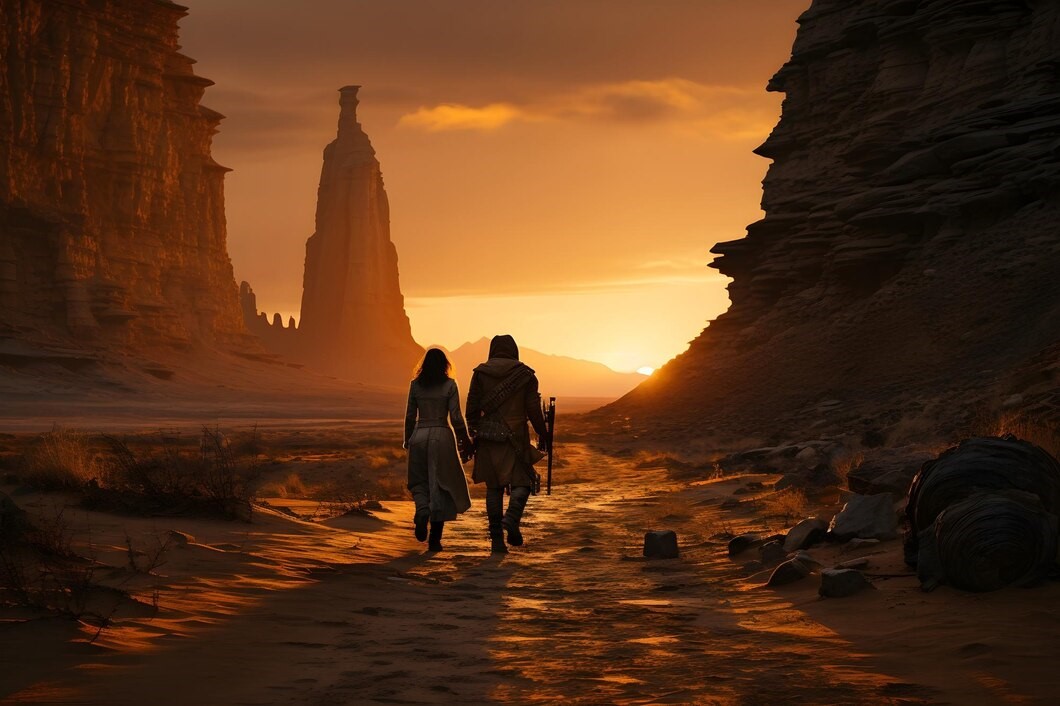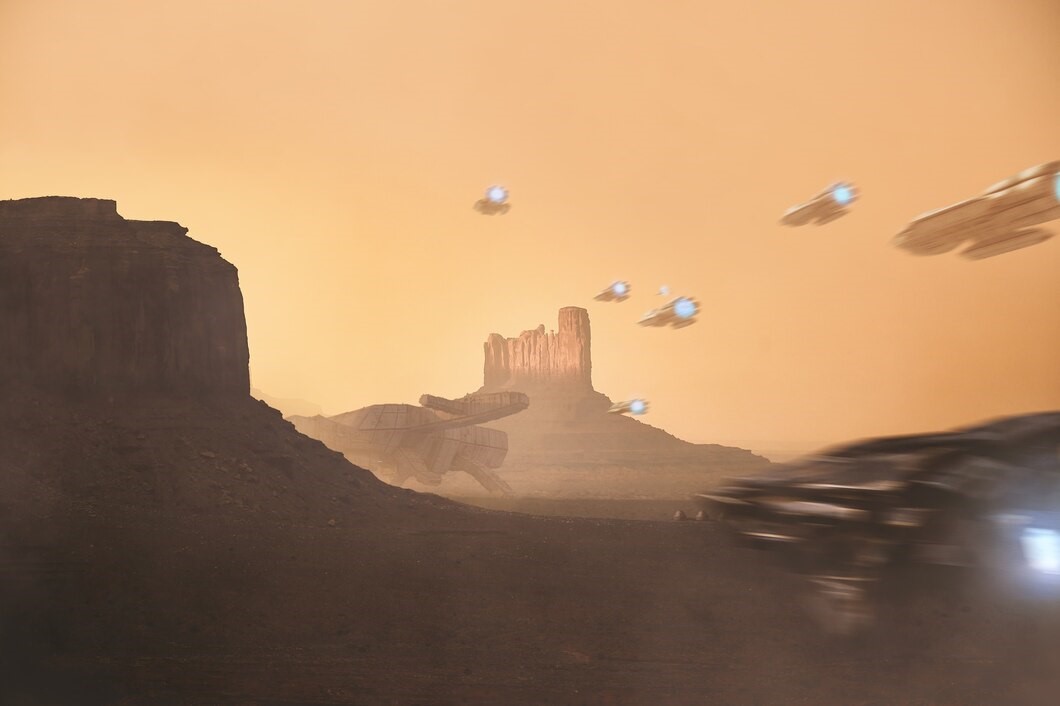Frank Herbert’s nuanced classic and futuristic epic “Dune” has been adapted into a science fiction magnum opus by Canadian filmmaker Denis Villeneuve. Being a more critically acclaimed version, the film profoundly portrays Herbert’s omniscient world-building in an astounding cinematic spectacle.
The novel, being a million-dollar best-seller, is considered “one of the greatest science fiction novels of all time.” Adapting it onto the big screen is no less than a miracle, as Villeneuve manages to cover the 800-page complex life of Paul Atreides in Arrakis over two hours and thirty-five minutes of run-time.

The film takes place in a futuristic setting in the year 10191. The story follows Paul Atreides played by Timothy Chalamet who is sent to the planet Arrakis with his parents, Lady Jessica and Duke Leto Atreides, played by Rebecca Ferguson and Oscar Isaac, to take over after the former rulers, the ruthless Harkonnens. Arrakis, informally known as Dune, is a fictional planet featured in Herbert’s novel and is integral to the film’s central plot for several reasons.
Despite being inhabitable and protected by massive sandworms, it serves as grounds for harvesting “spice” as whoever has control over Arrakis has control over spice. Additionally, it is a passage to interstellar travel, of which only the savage Fremen hold knowledge. As Paul’s fate as future ruler hangs in the balance, he navigates the impenetrable landscape of Arrakis with the help of the Fremen, letting the Dune saga unfold.
The casting is impeccable as Timothy Chalamet brilliantly embodies the role of Paul, a teenage boy, who is unaware of how to utilize his position after his father, Duke Leto. Lady Jessica played by Ferguson effortlessly personifies Paul’s dominant mother and her exposition of Bene Gesserit in the novel is equally impressive and a personal favorite.
The film also does a commendable job of incorporating intricate themes to complement the film’s central plot for example Paul’s prophecy as Muád’Dib, the discreet operations of Fremen, and the sinister plotting of the Harkonnens. The viewers are kept in the loop of various events occurring one after the other in the Dune universe which hint at something larger in the future. However, some events in the film may give a superficial impression to the viewers who have not read the novel in the first place.
Nonetheless, Villenuave compensates for this lack of context by showing Paul’s visions or dreams in which he meets Chani, another character, played by the enigmatic Zendaya. This meeting foreshadows Chani’s significance in Paul’s future journey amongst the Fremen.

Unlike the intended illusionary vision Herbert had for his novel, Villeneuve’s direction for Dune differs, as Villeneuve directs the movie in more of his signature style as seen in his prior films namely Blade Runner 2049 and Arrival. David Lynch, on the contrary, directed Dune in the year 1984, per the novel’s psychedelic ambiance.
With a distinct futuristic cinematography style, Villeneuve carefully orchestrates wide-shot images of sandstorms, spaceships, and Paul’s visions through the equivocal and extraordinarily gifted cinematographer, Greig Fraser. Both Fraser and Villeneuve make use of long monologues in the novel to visualize Arrakis mostly from Paul’s point of view throughout the film.
My favorite aspect is the utilization of a visceral monochromatic color palette which goes hand in hand with Greig’s shooting style. For this purpose, Greig particularly insisted on the use of shooting the scenes in natural light with sand screens to create proper reflection. In addition to this, both Fraser and Villeneuve experimented with adjusting camera angles for shooting technical scenes such as the scene with the ornithopter spinning around the worm.
The soul of Herbert’s book lies in establishing a link between the ecosystem and spirituality and the director-cinematographer duo masterfully engineer this phenomenon through specific shots in the film. Greig’s ability to fully immerse himself in various cultures and capture relevant moments coupled with Villeneuve’s scientific documentation takes a coming-of-age approach to this book-film adaptation and is indeed genius, if you ask me.
Secondly, if we were to talk about the costume design, the outfits for every character in the film are meticulously selected according to their character arcs. They are crisp, antique, and seem like they weigh a ton, at least!

If you think production design and cinematography are the icing on the cake, wait till you are mesmerized by the stunning editing and soulful music score. German film composer, Hans Zimmer, reunited with Villeuneve for Dune after Blade Runner 2049 for this project. Despite Zimmer’s former supposed commitment to Cristopher Nolan’s Tenet, he picked Dune instead owing to his childhood love for Herbert’s novel. Paired with BAFTA winner Joe Walker’s intuitive and timely editing, the film creates its rhythmic beats, certainly serving the cherry on top!
This book-film adaptation stands out because of Herbert’s take on the Bedouin culture, which is intricately woven into the characters’ lives in the Dune universe. As a Muslim viewer, reading the novel and watching the film in the theater kindles many emotions as you relate to the Islamic themes of dynasty politics, pilgrimage, and prophecies. It is both surreal and nostalgic. Consequently, to include an Islamic narrative in a pro-westernized film fraternity only to take it up as a massive budget project had me sold for the first day, first show!
Dune is a relatively slow-paced film and can be watched without reading the novel. The film’s marketing, however, was overblown but that might have been necessary to compensate for the large-scale investment in giving life to Herbert’s Dune universe. As most scenes are infused with imagery and colossal visuals, the prospects of experiencing individual character arcs, except for Paul, relatively become less.
Though, for sci-fi zealots like myself and those who have long treasured Herbert’s Dune, Villeneueve has certainly done justice to the book-film adaptation we all dreamt of. All in all, Dune is a bang for the buck! It’s both an auricular and visual feast with an ensemble cast, leaving viewers craving for more—be sure to watch part two where the dunes of Arrakis promise even stronger battles and revelations!
References:
- Ali, Ibraheem. “To Arrakis and Back: Frank Herbert’s Dune in Retrospect.” Traversing Tradition, 18 Oct. 2021, traversingtradition.com/2021/10/18/to-arrakis-and-back-a-retrospect-on-frank-herberts-dune/.
- Dune First Reviews: The Breathtaking Adaptation Fans Have Been Waiting For. editorial.rottentomatoes.com/article/dune-first-reviews-the-breathtaking-adaptation-fans-have-been-waiting-for/.
- Filmsupply. “Sifting Spice from the Sands of Dune: A Conversation with Joe Walker.” Filmsupply Blog, 18 Mar. 2022, www.filmsupply.com/articles/sifting-spice-from-the-sands-of-dune-a-conversation-with-joe-walker-ace/.
- Nast, Condé. “Shot List: Denis Villeneuve on the Images That Define “Dune.”” Vanity Fair, 17 Dec. 2021, www.vanityfair.com/hollywood/2021/12/awards-insider-dune-cinematography-shot-list.
Also, Read: Review: The Silent Contribution of Science Fiction to the Technological Advancements

Zainab Rahim Dar is a Biotechnology student at FC College, Lahore. She’s passionate about science’s convoluted and chaotic aspects, especially how science is evolving due to the AI revolution. She believes science is a vast field that can no longer be confined to the parameters of medicine and engineering. Besides, she cannot fathom living life without film/TV, novels, and theatre.

